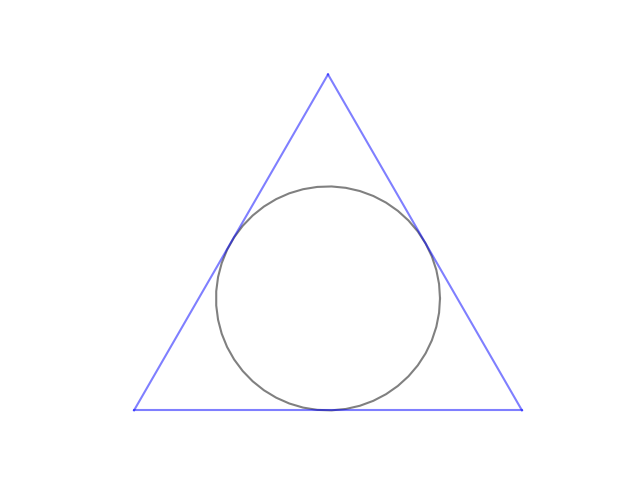Suppose you’re in a boring meeting and you start doodling. You draw a circle, and then you draw a triangle on the outside of that circle.

Next you draw a circle through the vertices of the triangle, and draw a square outside that.

Then you draw a circle through the vertices of the square, and draw a pentagon outside that.

Then you think “Will this ever stop?!”, meaning the meeting, but you could ask a similar question about your doodling: does your sequence of doodles converge to a circle of finite radius, or do they grow without bound?
An n-gon circumscribed on the outside of a circle of radius r is inscribed in a circle of radius
So if you start with a unit circle, the radius of the circle through the vertices of the N-gon is
and the limit as N → ∞ exists. The limit is known as the polygon circumscribing constant, and it equals 8.7000366252….
We can visualize the limit by making a plot with large N. The plot is less cluttered if we leave out the circles and just show the polygons. N = 30 in the plot below.

The reciprocal of the polygon circumscribing constant is known as the Kepler-Bouwkamp constant. The Kepler-Bouwkamp constant is the limiting radius if you were to reverse the process above, inscribing polygons at each step rather than circumscribing them. It would make sense to call the Kepler-Bouwkamp constant the polygon inscribing constant, but for historical reasons it is named after Johannes Kepler and Christoffel Bouwkamp.

It’s not immediately obvious that that product should converge – that is, that the doodle doesn’t become arbitrarily large. But taking logs, it converges if and only if
$\sum_{n=3}^\infty -\log \cos (\pi/n)$
converges. The summand is of order n^(-2) so we have convergence.
Plotting it myself, the difference between the figure at N = 30 is quite a bit off from the polygon circumscribing constant (PCC) limit for visualization purposes. (Unless you have a reeeeaaaallllyyy large line width for the PCC circle.) It’s not until I get to ~300 that the limit seems to be close to being reached visually with a reasonable 3-point linewidth on the limit circle.
Now I want to figure out what the value of N is such that the ratio between the PCC and the radius of the last polygon is the same as the ratio between the radius of the atmosphere and the radius of Earth. Let’s see, as an estimate, 8060/8000 = 1.0075, so using the equation above, I seem to reach the ratio at about N = 660 –> pcc/8.6353. Wow. Our atmosphere is so thin.
I just wanted to correct it for posterity that the /radius/ of the Earth is 4000 mi, which brings N down to 331.